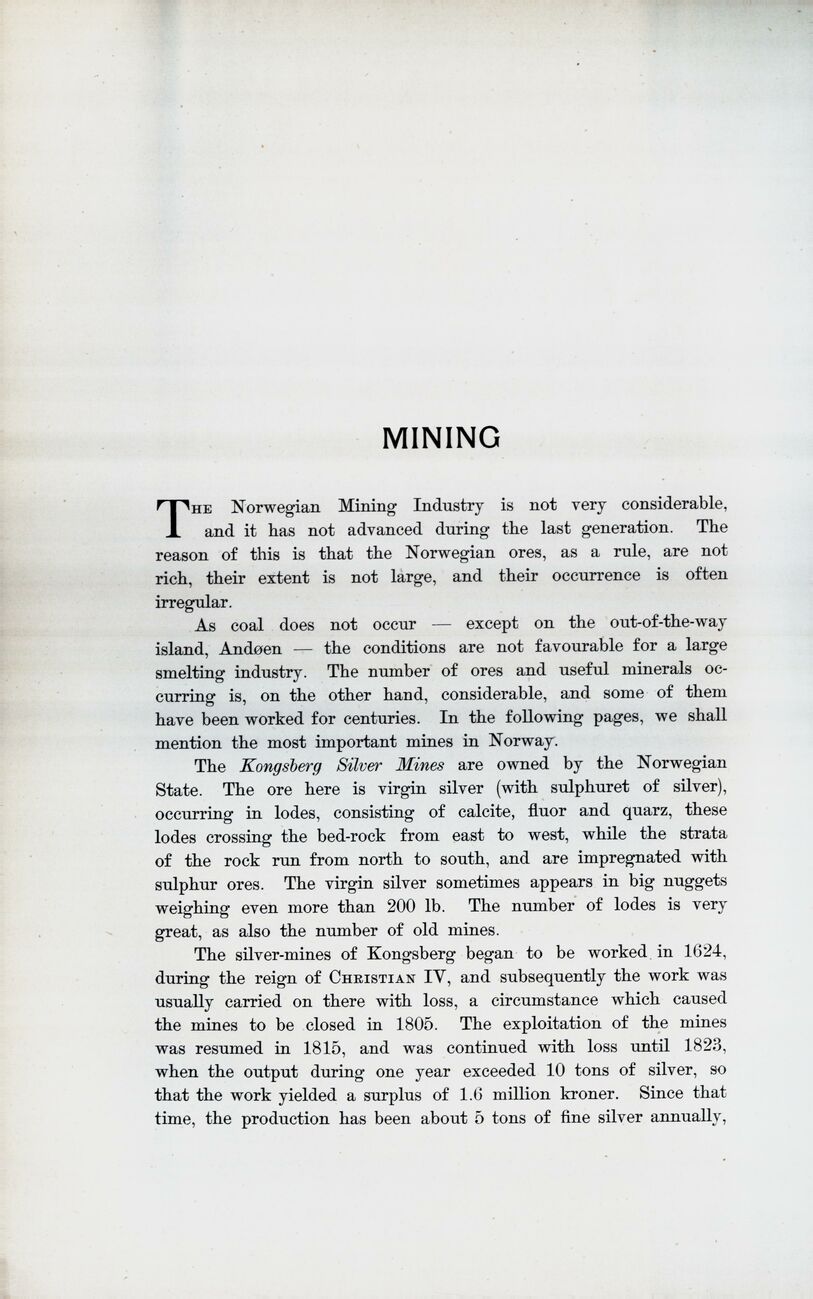
Full resolution (JPEG)
- On this page / på denna sida
- Mining

<< prev. page << föreg. sida << >> nästa sida >> next page >>
Below is the raw OCR text
from the above scanned image.
Do you see an error? Proofread the page now!
Här nedan syns maskintolkade texten från faksimilbilden ovan.
Ser du något fel? Korrekturläs sidan nu!
This page has been proofread at least once.
(diff)
(history)
Denna sida har korrekturlästs minst en gång.
(skillnad)
(historik)
MINING
The Norwegian Mining Industry is not very considerable,
and it has not advanced during the last generation. The
reason of this is that the Norwegian ores, as a rule, are not
rich, their extent is not large, and their occurrence is often
irregular.
As coal does not occur — except on the out-of-the-way
island, Andøen — the conditions are not favourable for a large
smelting industry. The number of ores and useful minerals
occurring is, on the other hand, considerable, and some of them
have been worked for centuries. In the following pages, we shall
mention the most important mines in Norway.
The Kongsberg Silver Mines are owned by the Norwegian
State. The ore here is virgin silver (with sulphuret of silver),
occurring in lodes, consisting of calcite, fluor and quarz, these
lodes crossing the bed-rock from east to west, while the strata
of the rock run from north to south, and are impregnated with
sulphur ores. The virgin silver sometimes appears in big nuggets
weighing even more than 200 lb. The number of lodes is very
great, as also the number of old mines.
The silver-mines of Kongsberg began to be worked in 1624,
during the reign of Christian IV, and subsequently the work was
usually carried on there with loss, a circumstance which caused
the mines to be closed in 1805. The exploitation of the mines
was resumed in 1815, and was continued with loss until 1823,
when the output during one year exceeded 10 tons of silver, so
that the work yielded a surplus of 1.6 million kroner. Since that
time, the production has been about 5 tons of fine silver annually,
<< prev. page << föreg. sida << >> nästa sida >> next page >>
Project Runeberg, Sun Dec 10 21:09:24 2023
(aronsson)
(diff)
(history)
(download)
<< Previous
Next >>
https://runeberg.org/norparis/0394.html



